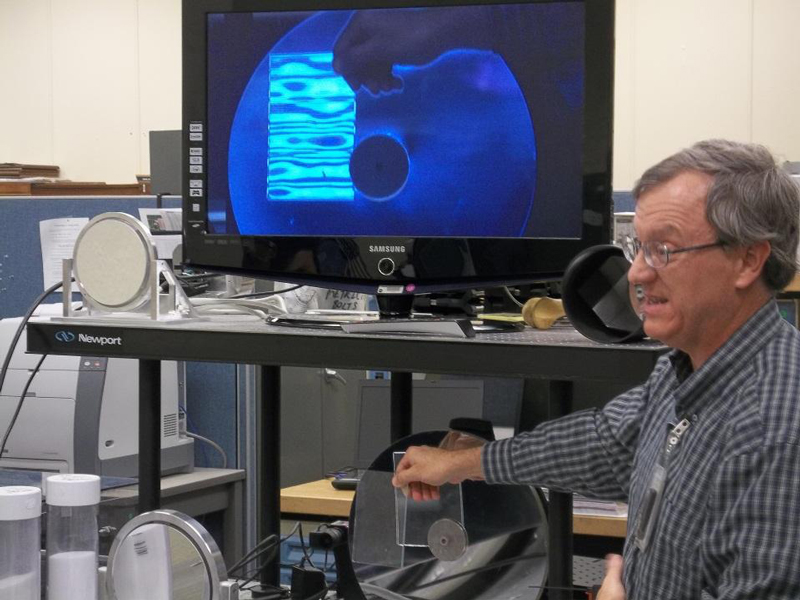Solving NASA's Problems
Fall
2012
Special Feature
Solving NASA's Problems
A Behind-the-Scenes Look at NASA's Kennedy Space Center
By:Kevin Rhine
Idaho State University

As a child, I frequently heard about the achievements of our impressive space program but found it difficult to imagine what really goes on at NASA—aside from sending rockets beyond our atmosphere. After seeing for myself during a behind-the-scenes tour of the Kennedy Space Center, it all seems quite clear now. NASA is a place for problem solvers.
This organization reaches not only into the sky, but deep into the general physics community. Bob Youngquist, a NASA scientist who gave us an extremely enjoyable and informative demonstration, has for decades found solutions to problems for which other NASA departments are not specialized. One such problem stemmed from the need to closely examine the space shuttle, liquid fuel tank, and solid rocket boosters prelaunch. Measuring the size and severity of blemishes from the ground is difficult. So NASA scientists arranged two laser pointers with parallel beams a fixed distance apart in a portable box. This box could be mounted on a camera, allowing a photographer to document any faults from the ground with two pinpoint laser dots providing a sizing scale. This simple device has been used not only to further space exploration, but to improve crime scene investigations.
During another presentation, we learned of a technology being developed to clear sand and dust from a glass pane without the use of mechanical wipers. Nearly invisible electrodes embedded in the glass create electromagnetic pulses to disperse the pesky particles. This approach would be especially useful for cleaning the camera of a rover exploring a planet that has little or no atmosphere, where dust interacts with other matter in ways it doesn’t here on Earth. With more progress, this may be a technology we will begin seeing in terrestrial vehicles and eyewear.
Another endeavor underway at NASA is the pursuit of efficient lunar mining. The low-gravity environment of the Moon makes a normal dozer or drill design impractical. On Earth we can make tractors as big and heavy as needed in order to perform in whatever environment they are designed for. But this brute-force approach isn't cost effective on the moon, since lifting the extra pounds into space is very expensive. The solution being developed is a lunar tractor that lowers counter-rotary drilling buckets at both of its ends, lifting up the entire machine. All weight goes into the drilling process, rather than just a fraction. Interestingly, due to buoyancy, underwater robotic drilling can result in some of the same problems as in the lunar situation.
I came away from this trip to NASA with a renewed sense of clarity and a new motivation for tackling the problems I sometimes face in my own life. During the final night of the conference, a friend and I found ourselves stuck in the sand in a rented jeep that lacked four-wheel drive. After several hours of digging, lifting, and experimenting with various makeshift wooden ramps and levers, we might have lost morale. But we worked with the determination and deliberate thoughtfulness of the NASA scientists who spoke to us. We resolved our problem.
To many, the technologies that come out of the NASA space program are indistinguishable from magic. To me, they are simply outgrowths of concepts and applications we already understand, constructed by people not much different from myself, and held together by ingenuity. //
